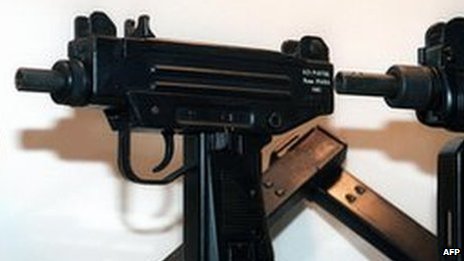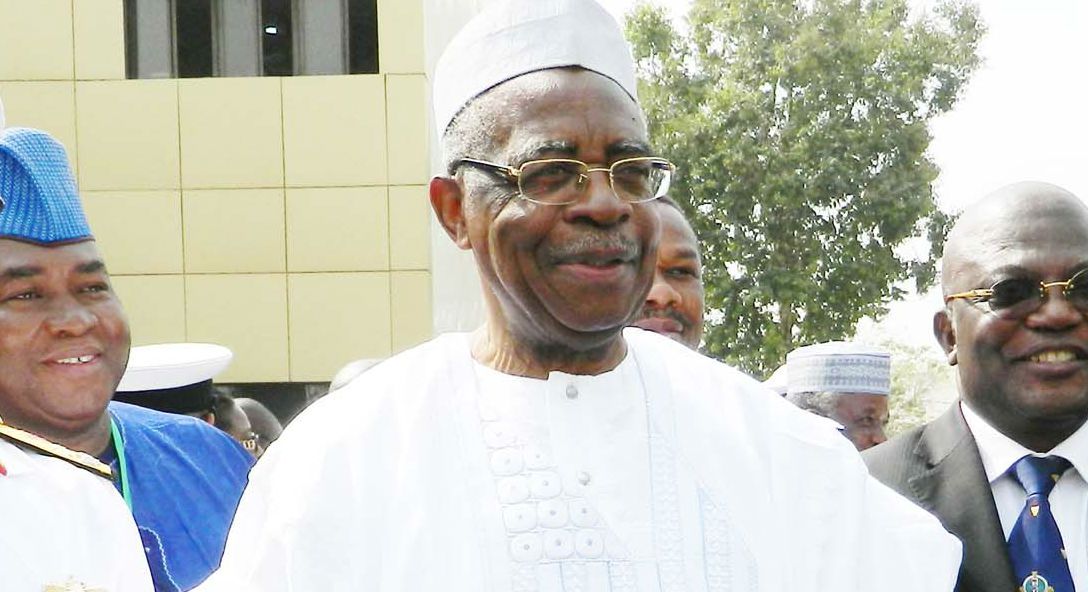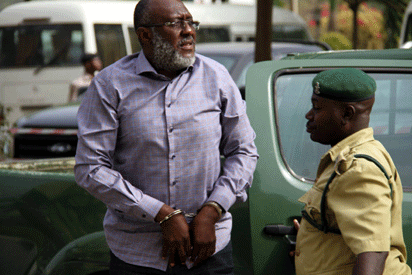It was 14 December 2012, the day Obama would later deem the most difficult of his presidency. And although he had largely avoided invoking the issue of guns while addressing the nation on mass shootings before, this time was different – and the president wished to make it known.
As he prepared to address the nation from the White House podium, Obama handed his edits to his speechwriters, Cody Keenan and Jon Favreau, and told them: “So we let the NRA know we’re coming after them.”
The president was referring to a line he had added to his prepared remarks to signal that thoughts and prayers would no longer be sufficient: “And we’re going to have to come together and take meaningful action to prevent more tragedies like this, regardless of the politics,” he would say.
The signal quickly evolved into a full-scale campaign by the Obama administration to reform America’s gun laws. But five months later, Obama would again appear at the White House to declare a “shameful day” in Washington.
The Sandy Hook massacre in Newtown, Connecticut, shook the the conscience of the nation, but the outcry over the deaths of so many small children was still not enought to move lawmakers to act.
As the US on Tuesday marks the fifth anniversary of the failed push for universal background checks after Newtown, the country finds itself on the verge of another moment of reckoning in the aftermath of yet another school shooting.
Fourteen students and three educators were killed in the 14 February massacre at the Marjory Stoneman Douglas high school in Parkland, Florida, prompting a new wave of activism in favor of gun restrictions.
Advocates believe the renewed campaign, led by the student survivors from Parkland, could prove a watershed moment in their decades-long struggle to counter the powerful National Rifle Association.
But they are also haunted by the familiar political obstacles that undermined, and ultimately killed, the debate following Sandy Hook. In the five years since, the silence in Washington has been overwhelming, despite at least 1,625 mass shootings and more than 1,862 people killed.
On the morning of 14 December 2012, a 21-year-old gunman shot and killed his mother before heading toward the Sandy Hook elementary school with a semi-automatic .223-caliber Bushmaster rifle and two handguns. He fired 154 rounds in five minutes, claiming 26 victims before turning the gun on himself. Details swiftly emerged of the fallen children, aged six and seven, and the six teachers and assistants who died while trying to protect their students.
Hours after the rampage, Obama wiped away tears at the White House podium as he spoke of the “overwhelming grief” felt by parents across America.
“The majority of those who died today were children,” the president said. “They had their entire lives ahead of them – birthdays, graduations, weddings, kids of their own.”
In the aftermath, support for stricter gun laws rose sharply. Lawmakers on Capitol Hill, ever reluctant to grapple with the politically contentious issue of gun control, signaled they would consider new restrictions on firearms.
The NRA went silent for a week after the shooting, even taking down its Facebook page amid backlash from the public. The group was not heard from until 21 December, when the executive vice-president, Wayne LaPierre, held a news conference in Washington and struck a defiant tone – blaming liberals, the media and a violent culture, but not guns – for the events at Sandy Hook.
It was then that LaPierre introduced what became a primary talking point of the pro-gun movement: “The only thing that stops a bad guy with a gun is a good guy with a gun.”
The Obama administration had not planned on gun reform ranking among the top priorities of the president’s second term. The White House was instead eyeing a campaign for comprehensive immigration reform as Obama’s first act following his 2012 re-election.
But the ritual of comforting the nation after a mass shooting had become all too familiar for a president who in four short years had already borne witness to several tragedies: Fort Hood in November 2009; Tucson in January 2011; Aurora in July 2012; and Oak Creek in August 2012.
“They all had this terrible rhythm to them,” said Keenan, the Obama speechwriter. “You start seeing tweets that there’s been a shooting somewhere … The president goes and says something, and the country moves on.”
But Newtown marked a turning point for Obama. “It would have been a massive failure of leadership if he didn’t even try. And he knew that,” Keenan said.
In the subsequent weeks, Obama announced 23 executive actions to curb gun violence, relatively modest in their scope, and called for Congress to pass extensive reforms to the nation’s gun laws, including a ban on assault weapons and high-capacity magazines, an expansion of background checks and a crackdown on gun trafficking.
Lawmakers in the Democratic-led Senate began closed-door negotiations, with prospects unlikely that the Republican-controlled House would be the first legislative body to move.
A rare bipartisan breakthrough was established by Senator Joe Manchin, a pro-gun Democrat from West Virginia, and Senator Pat Toomey, a reliably conservative Republican from Pennsylvania. Their bill, known as Manchin-Toomey, would have expanded background checks to cover unlicensed dealers at gun shows and online sales.
The idea of universal background checks had already been gaining momentum. Support for the concept soared to 90% among the American public after Sandy Hook.
The Sandy Hook families traveled to Washington to implore lawmakers to take action. As the Senate voted to begin debate on gun control, Senator Chris Murphy, a Democrat from Connecticut, paid tribute to the victims inside the chamber. Dylan Hockley, a six-year-old victim, beamed in a Superman shirt from a photo displayed behind Murphy and became one of the faces of reform.
As the crucial vote came around, Obama handed the task of delivering his weekly presidential address over to Francine Wheeler, whose six-year-old son, Ben, was murdered inside the school.
Elsewhere, the NRA was mounting a campaign of its own. Despite scoring a number of concessions in negotiations around Manchin-Toomey, the group went on to oppose the bill anyway.
In an attempt to pressure lawmakers, the NRA vowed to “score” how senators voted on the bill, in effect warning that going against the gun lobby would spell electoral consequences.
By the time the vote series came around on 17 April, the margins for Manchin-Toomey were razor thin. The nation’s attention had already shifted elsewhere: two days prior, a terrorist attack had occurred at the Boston Marathon, leaving three people dead and several injured. An intense manhunt for the two suspects was unfolding.
The Senate commenced a procedural vote on Manchin-Toomey, as the Sandy Hook parents looked on from the gallery. A series of other proposals, such as bans on assault weapons and high-capacity magazines, had already been swatted away.
As silence fell over the chamber, the bill was blocked by a Republican-led filibuster, with four Democrats joining them in opposition.
A visibly angry Obama, flanked by victims’ families outside the White House, declared the loss “round one”.
“All in all, this was a pretty shameful day for Washington,” he said.
“Sooner or later, we’re going to get this right … The memories of these children demand it. And so do the American people.”
In the months that followed, momentum in Washington stalled even as the rate of gun violence across the country remained steady.
On Capitol Hill, talk of reviving gun control was virtually nonexistent. The Senate took a handful of votes after mass shootings perpetrated by terrorists, first in San Bernardino in 2015 and then at an LGBT nightclub in Orlando in 2016, but neither resulted in the passage of new laws.
Kristin Goss, author of Disarmed: The Missing Movement for Gun Control in America, said history had already shown no single event would be powerful enough to change the debate overnight.
“The mobilization around gun control waxes and wanes,” said Goss.
“The idea that our national consciousness is going to change the underlying political dynamics, relationships and commitments that gun rights advocates have built over decades is pretty naive.”
At least two mass shootings in the first year of Trump’s presidency similarly failed to move the needle.
The massacre at the Harvest music festival on the Las Vegas Strip in Nevada on 1 October 2017 left 58 people dead and 851 injured, eclipsing others as the deadliest mass shooting in modern US history. The following month, a gunman killed 26 at the First Baptist church in Sutherland Springs on 5 November, marking the largest mass shooting in Texas history.
Unlike his predecessor, Trump made no public declarations seeking stricter gun laws.
Mark Glaze, a co-founder of the group Guns Down and formerly the executive director of Everytown for Gun Safety, had long held the belief that a Republican president would be uniquely positioned to effect real change on gun laws.
“But I think anybody who expects Donald Trump to do that after the NRA spent $30m to get him elected is just dreaming,” Glaze said.
Anti-gun violence advocates are quick to point out that theirs is a movement decades in the making.
While Sandy Hook and Parkland serve as easily identifiable bookends to the brimming frustration over inaction, the school shootings at Columbine in 1999 and Virginia Tech in 2007 were precursors to the current climate. The anniversaries of both of those shootings also fall this week.
As a former special adviser to Mayors Against Illegal Guns, the anti-gun-violence coalition founded by the former New York City mayor Michael Bloomberg, Arkadi Gerney recalled the tumultuous politics associated with guns in years past.
Newtown, he argued, “opened the floodgates for building the movement” and crucially transformed how the issue was perceived within the Democratic party.
“Now there are basically no renegade Democrats on guns,” Gerney said. “It’s a litmus test.”
Marjory Stoneman Douglas high school students hold their fists up in the air as they participate in the March For Our Lives.
Facebook Twitter Pinterest Marjory Stoneman Douglas high school students hold their fists up in the air as they participate in the March For Our Lives. Photograph: Joe Raedle/Getty Images
The shifting dynamics are what some say have enabled the Parkland students to dramatically increase pressure on the Republican-led Congress and White House.
Although conservatives sought to dismiss the March for Our Lives as a partisan affair, the rallying cry of the millions who took to the streets in Washington and across the country reverberated inside the hallways of Capitol Hill.
A budget approved by Congress last month included a modest provision to strengthen reporting into the existing background checks system. A bipartisan proposal that would allow law enforcement officials or family members to file gun restraining orders to remove firearms from potentially violent individuals is also said to be gaining supporters.
Having watched the calls for action escalate after Sandy Hook, only to subside in the face of defeat, Keenan identified the Parkland students as the movement’s “missing piece”.
“They’re too young to be cynical about it, too young to make those compromises,” he said.
“It turns out these kids are the ones we’ve been waiting for.”






